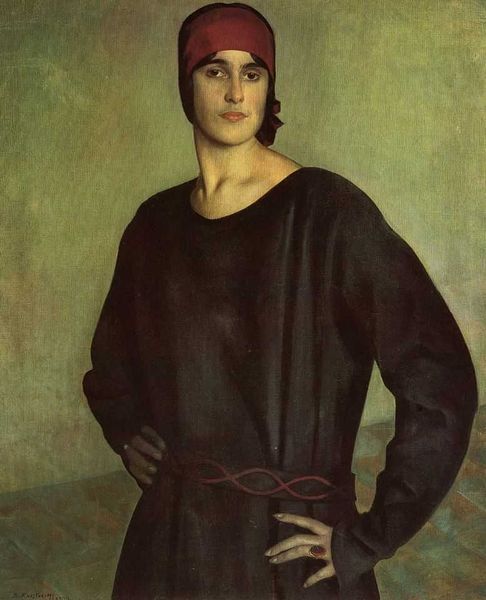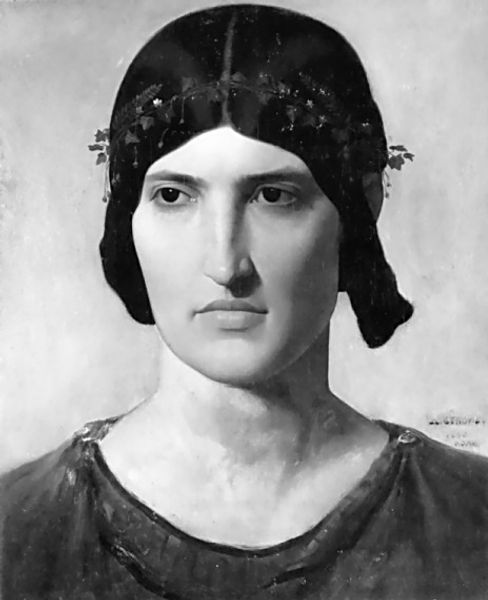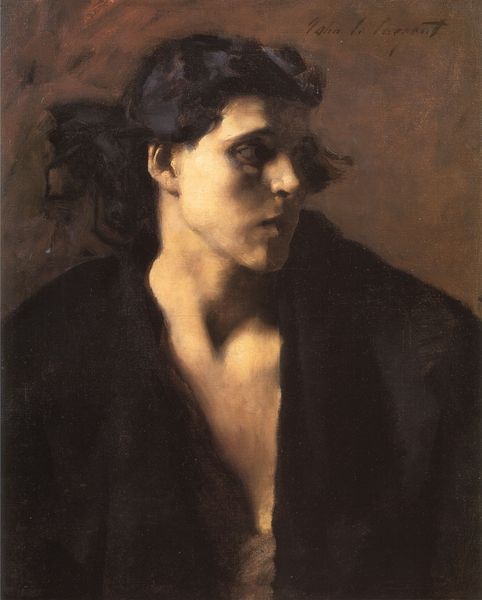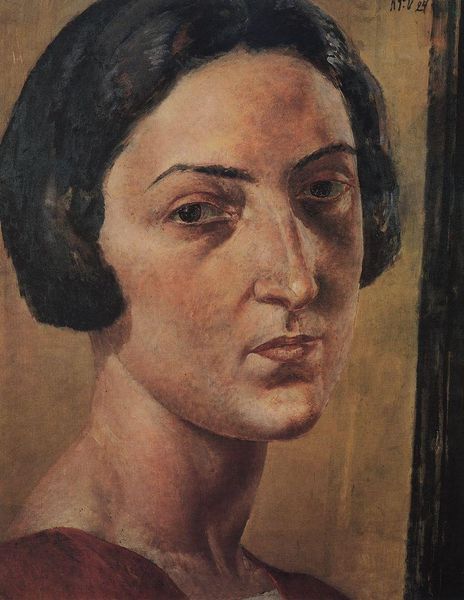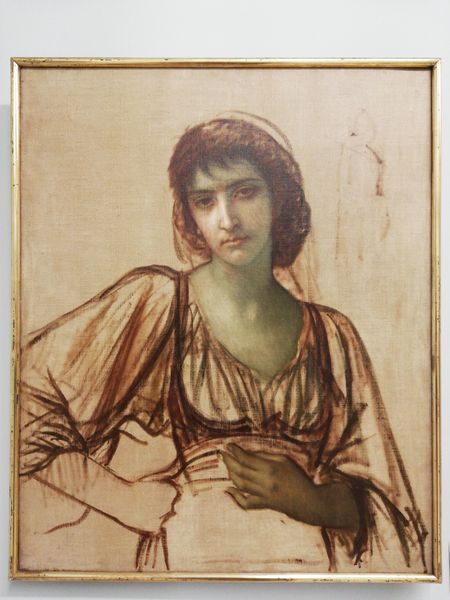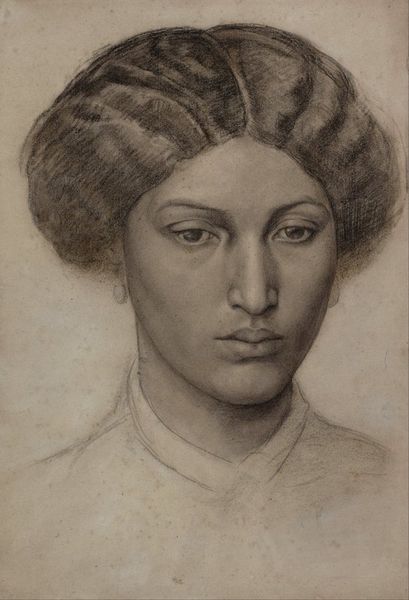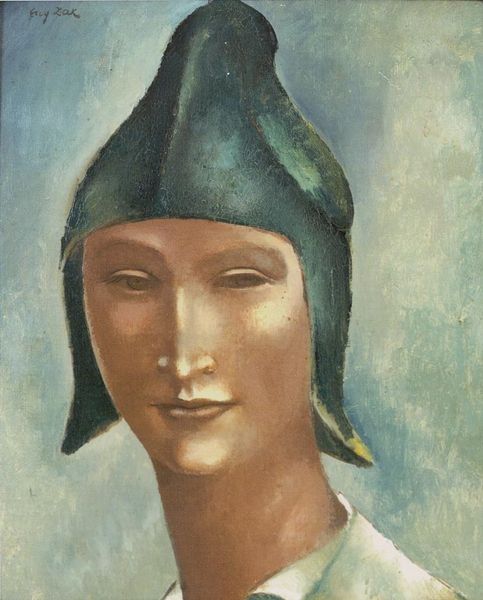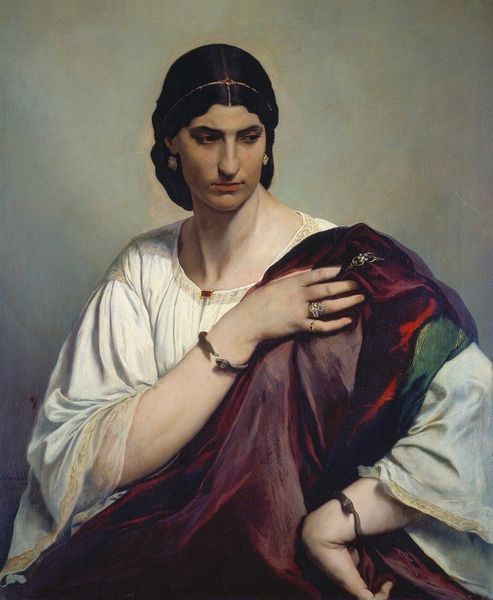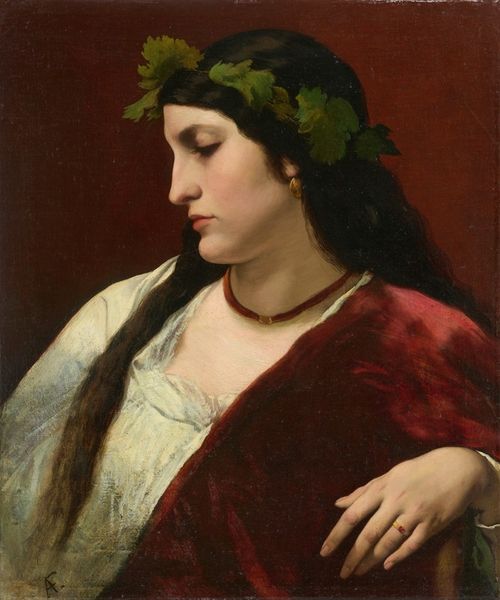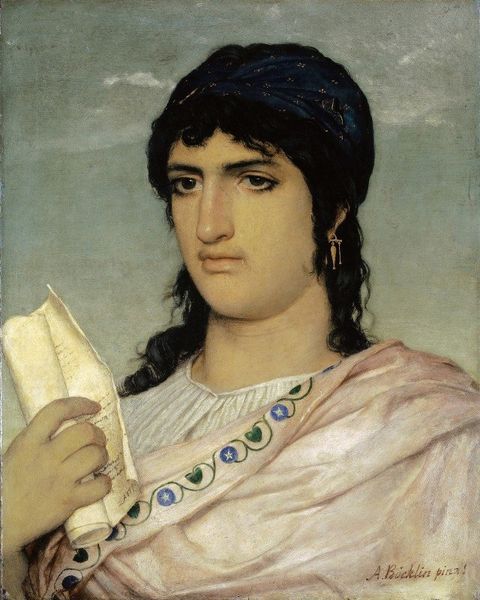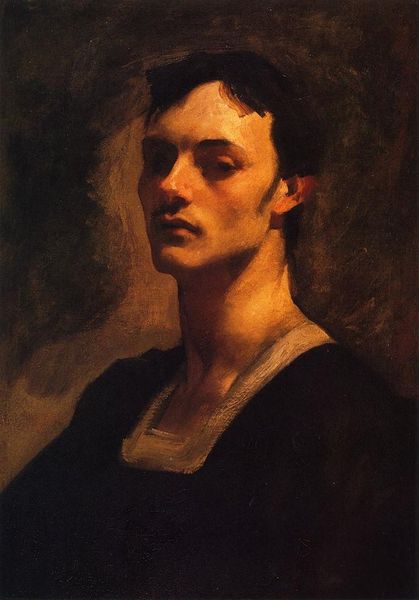
painting, oil-paint
#
portrait
#
neoclacissism
#
16_19th-century
#
painting
#
oil-paint
#
academic-art
#
realism
Copyright: Public Domain: Artvee
Editor: This is Jean-Léon Gérôme's "Head of an Italian Woman," painted between 1847 and 1860 using oil paint. The woman’s serene expression and the stark background create a striking sense of detachment. What do you see in this piece, beyond the surface realism? Curator: I see a carefully constructed representation steeped in the orientalist fantasies that were prevalent during Gérôme's time. It appears Neoclassical on the surface, but underneath there's this fascination with the 'exotic' other. Consider the gaze – is it inviting, or is it a distanced observation? This question reveals that it's the latter; there is an air of cool, detached examination of another culture. Editor: I hadn't considered the "exotic other" aspect. I was more focused on the woman’s somewhat neutral expression. So, it’s less a portrait of an individual and more of a representation of a type? Curator: Precisely. Gérôme’s travels in the Mediterranean, North Africa and Middle East provided material for these orientalist portrayals. The woman is positioned in this light, not necessarily as herself, but representing some idea that the West projected onto Italian women – consider too how ideas about race and class would have been completely interwoven in that era. Who got to be considered beautiful and why? And what did being ‘Italian’ signify for Parisian society? Editor: That really shifts my perspective. So, looking at it now, the serenity I initially perceived feels more like a constructed ideal – an objectification. Curator: Exactly! Now, consider this work in the broader context of imperialism, how people in power justify oppression using visual cues – does this change the way we should approach Gérôme's artistic achievements? Editor: Definitely. I'm much more aware now of how cultural biases and power dynamics inform these so-called realistic depictions. Thanks. Curator: Indeed! Remember, art doesn't exist in a vacuum. Considering social, historical and philosophical influences greatly enhances appreciation.
Comments
No comments
Be the first to comment and join the conversation on the ultimate creative platform.
